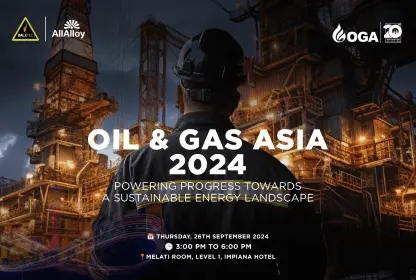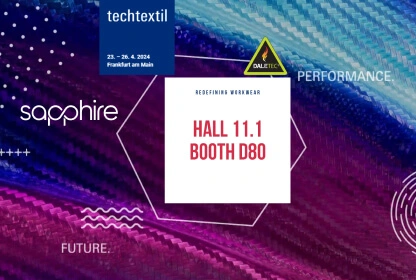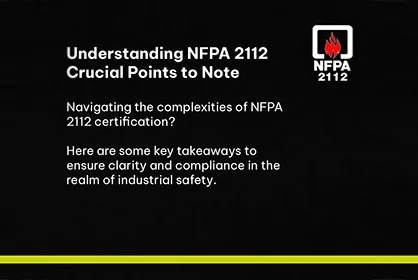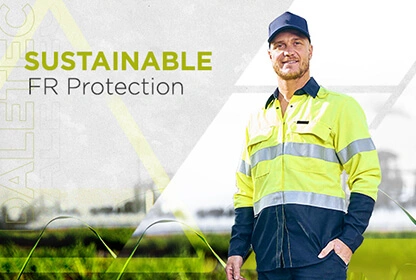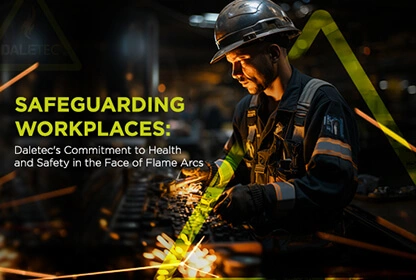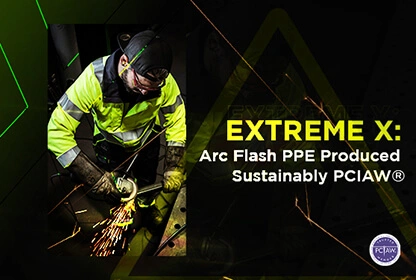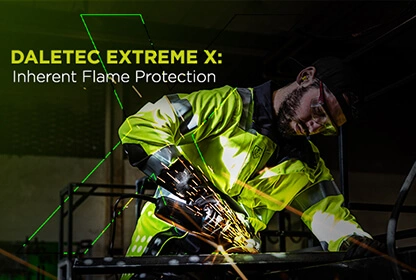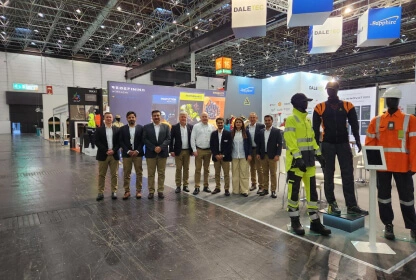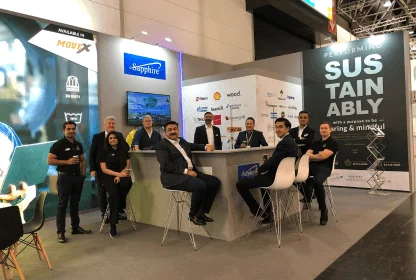May 28, 2018
News & Media
Burning Once Is Still A Burn
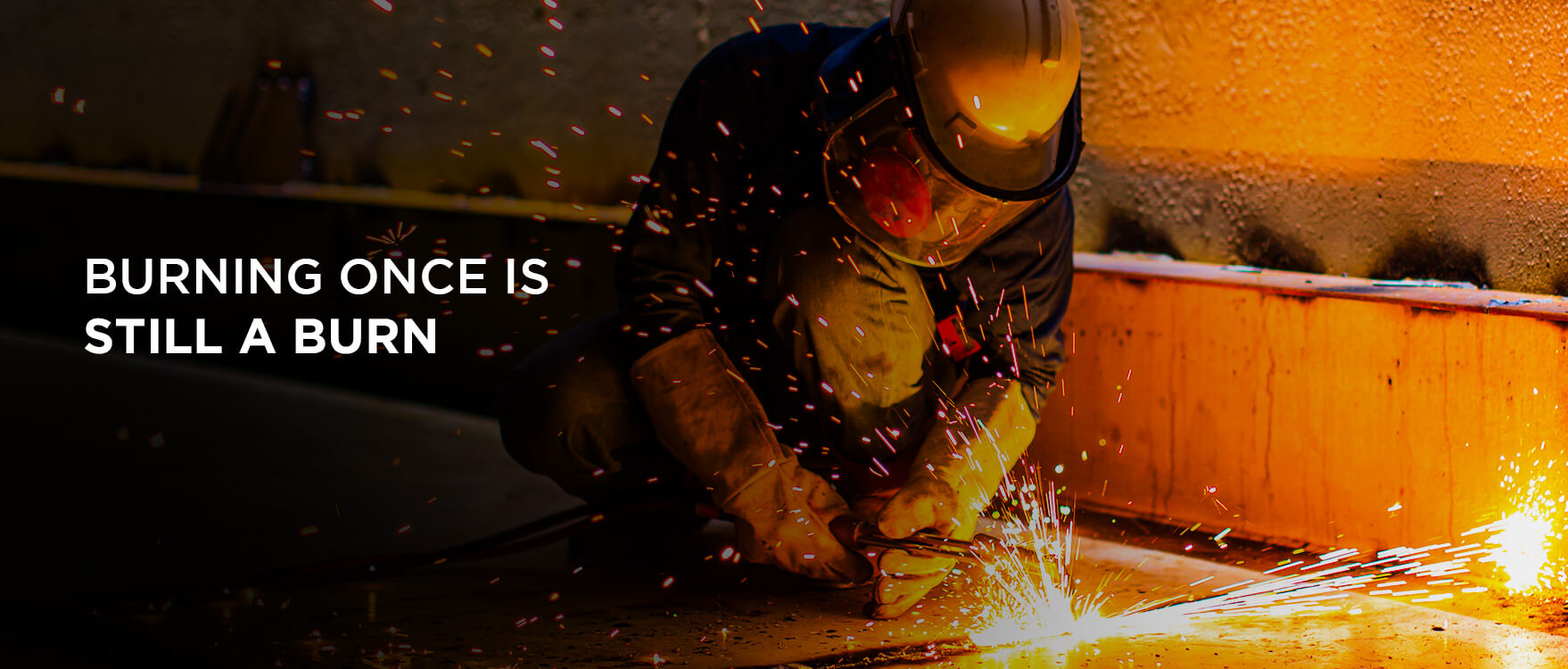
Here’s How You Can Prevent The Overwhelming Consequences in USA by using protective clothing made out of fire retardant fabrics
According to the 2015 Bureau of Labor Statistics, there were 14,120 nonfatal cases of thermal burns in 2014. From 2015-2016, a 7% increase in workplace deaths was reported in USA, with 5,190 employees killed at work in 2016, which is recorded to be the highest number of mortalities since the year 2008.
Occupational Health and Safety Administration is responsible to assure safe and healthful working conditions for working men and women in the USA. In addition to setting and enforcing standards, OSHA is providing training and education within health and safety matters to minimize the number of accidents.
But even if you have all the proper training and make the workplace the safest possible, an accident could still happen. Buildings and other property which is damaged in an explosion can often be mended or restored, but a human life can never be replaced. Therefore, everything that is in the company’s power to keep employees safe must be done.
An employer cannot dare to forget that the cost of burn injuries goes beyond the fatalities or severity of injuries, the consequences are often bigger.
Although this article deals with the costs of injuries, no one can deny the fact that human life and safety cannot be equated with any kind of cost. This is the reason why companies invest efforts and resources to create an optimal working environment. Protective clothing is one of the important elements in this regard. The design of protective gear is of utmost importance in that it should always ensure that the PPE provides maximum protection to the wearer from all hazardous incidents. Failing to choose the right PPE can be dangerous for the life of workers and will also have a significant cost impact associated with it.
One burn incident is enough to cost a company to lose millions of dollars because of OSHA fines, legal costs and hospital charges, to name a few. Contrary to the primeval conception that protective fabrics were nothing more than just an accessory, flame retardant fabric is now considered a necessary protection according to industry standards.
OSHA Penalties
OSHA Penalties are one of the significant costs to consider. As of January 2nd, 2018, OSHA has declared the penalty amounts for different types of violation, including $12,934 for serious posting requirements, $12,934 per day in case of failure to abating with the penalties and $129,336 for repeated or willful violations.
Legal Costs
In case of negligence and lawsuits, the average settlement cost can go as high as a million dollars depending upon the law of the country the corporations operate in. The cost of lawsuit, settlement, or fine in case of an explosion or negligence can sometimes go beyond what a company can afford. Not to mention how damaging it can be for the reputation of the brand if it is known that employee safety is not taken care of properly.
Hospital Charges
The average stay for a survivor with 40-60% burns in a hospital is estimated to be 50-60 days, and the cost of the hospital stay varies from country to country. However, there’s no doubt that it can cost up to a million dollars and even more.
Compensation insurance for employees doesn’t always cover their hospital bills as some plans usually cap the maximum recompense per injury case, leaving the bulk of the remaining payment for the company to take care of.
The Art of Prevention
“An ounce of prevention is worth a pound of cure”
– Benjamin Franklin
As in the case of most things, prevention is better than a cure. It is definitely more beneficial to consider the significance of preventive care as burn incidences don’t only involve monetary setbacks, but damage to company reputation as well. In this day and age, companies have a huge disposal of preventive measures that can be used to create a secure environment.
How Fire Retardant Fabric is Creating A Difference
Although protective fabrics are the last line of defense for workers, they can create a significant difference for them at the time of accident. Imagine that workers are exposed to fire, without wearing a garment made out of fire retardant fabric the workers’ clothes can ignite and catch fire immediately, possibly magnifying the impact of burns on their skin. Alternatively, if protective gear is worn by the workers then it gives them an extra protective, which will save them from getting high degree burns instantly.
Any single burn injury can cost a company multiple times more than a well-designed and successful implementation of personal protective equipment. It is, thus, a more logical step to invest once in adopting PPE and later upgrading them than it is to leave the workers at the mercy of probability.
Since the work nature and level varies from company to company, even for those operating within the same industry, you cannot depend on a “one size fits all” strategy. Rather, the corporations need to find the perfect match to their work environment and nature of job. Companies can start by evaluating the risks and hazards that their workers are most likely to be exposed to and then select the program that minimizes those risks and hazards. The important point to keep in mind is that the flame retardant fabric should abide by the industry standards.
Comfort
It is of significant importance that all companies ensure that the workers are wearing the protective garments before they start doing their assigned job tasks to avoid any incident that may happen if protective gear is not worn properly. Furthermore, companies need to take the comfort of the workers in consideration as well. As PPE is most likely to be worn by workers during work hours, it needs to be comfortable as well as protective. In case of uncomfortable, heavy or irritant clothing, the workers are more likely to be distracted while carrying out their duties, hence, increasing the risk of errors. Therefore, it is necessary that companies select the type of fabric that is not only the right fit for the jobs but also doesn’t limit the movement of the wearers, in addition to not being too light or too thick. Thereby, it will increase the probability of the workers to wear their protective gear consistently.
In order to keep the costs minimal for the companies, they need to find a fabric that is both durable and hold long-lasting value. Low quality PPE with tears, holes or worn out fabrics doesn’t offer sufficient protection to the wearers. Therefore, it is essential that the products chosen by the company are manufactured by reputable flame retardant textiles brands so that the companies will not have to spend time and again in purchasing protective gear for their workers. Undoubtedly, the upfront cost for a premium quality protective fabric can be steep. However, since their life is longer than other low quality products, they deliver higher value to the companies and cut down the replacement costs significantly.
Daletec – A pioneer brand on the verge of making a difference
Daletec – a pioneer brand in flame retardant fabric industry has made its way to the top by having one strong belief that no life should be compromised at any cost. We at Daletec give highest priority to human safety and have been busy in engineering enhanced flame retardant fabric solutions to our customers in order to give maximum protection and comfort to the wearers working in different environments. Be it in the field of oil & gas working environment, utilities, foundries, welding or grindings; Daletec has a complete protective fabrics solution of fire retardant fabrics to meet your requirements. At market competitive prices, you get the best solution in terms of durability, premium quality and long lasting flame retardant properties of the fabrics.
Considering the needs of US customers, Daletec has introduced multiple FR fabric solutions offering protection against severe injuries. From cotton based treated FR fabric solutions to specialized inherent fabrics; Daletec has an extensive arsenal from which customers can choose any FR solution (all being certified to NFPA 2112) according to their needs.
It doesn’t stop here.
After the breakthrough of Modamid ArcLite having Cal rating of 10 in superlight weight of 195gsm; Daletec recently launched inherent fire-retardant quality in an even lighter weight i.e. 185 gsm with a Cal rating of 8.4. Both these articles have provided best solutions to US-specific requirements of light weight HRC 2. For decades, Daletec has dedicated its resources to maintain its standard without compromising its quality and will continue to do so.
Stay connected for more updates on our Facebook and LinkedIn.

